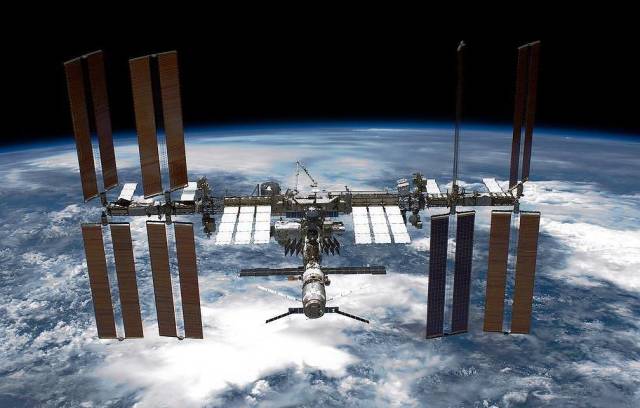In a single-turn scheme, it will take about two hours, said the head of the corporation's ballistics department, Rafail Murtazin
MOSCOW, February 7. /tass/. Specialists of the rocket and Space Corporation Energia (part of Roscosmos) have patented a method of single-turn flight to the International Space Station (ISS). This was reported to TASS by the head of the ballistics department of the corporation Rafail Murtazin.
"We have been granted a patent, since November 12 it has been included in the register of state inventions of the Russian Federation," he said.
According to the ballistics expert, in a single-turn scheme, the flight to the ISS will take about two hours. It is assumed that the spacecraft, after separation from the third stage of the launch vehicle and the execution of two pulses, will be launched into a coelliptic orbit, geometrically similar to the orbit of the ISS. When the station is observed from the ship at an angle of 23 degrees above the horizon, an impulse is executed, which in half a turn will lead the ship to the vicinity of the station. If necessary, the crew performs this impulse manually.
"For a single-turn circuit, the permissible range of initial phase angles [the angular distance between the spacecraft and the station after launching into orbit] is approximately 1 degree. It is difficult to ensure such high accuracy," the expert is convinced.
Murtazin explained that quasi-planar launching, in which the ship is put into orbit with a slight mismatch with the plane of the ISS orbit, will significantly expand the phase range. "The trajectory of the launch vehicle (LV) in the flight section of the first and second stages remains unchanged. When the third stage begins to work, the control system smoothly unfolds the launch vehicle along the course and brings it to a new inclination, two to three hundredths of a degree different from the inclination of the ISS," the ballistics expert said, stressing that the corresponding capabilities of the rocket were confirmed by the developers of both the carrier (Progress RCC) and its control system (NPO Automation).
Then, in order to align the plane of the orbit with the orbit of the ISS, the ship will need a lateral impulse. "If you build the scheme correctly and shift the lift momentum for convergence to the point of intersection of the orbits of the spacecraft and the ISS, the price of the lateral component of the pulse will "sink" in a large lift pulse," Murtazin added.
About working out
In April 2019, RSC Energia spoke about the development of a single-turn scheme for spacecraft rendezvous with the ISS. Then the RSC press service noted that it could be implemented in two to three years. The elements of the single-turn approach scheme to the ISS were worked out during the flight of the Progress MS-17 transport cargo ship last summer.
In December 2021, Roscosmos CEO Dmitry Rogozin, during a conversation with cosmonauts, said that single-turn flights on spacecraft to the ISS would begin soon.

